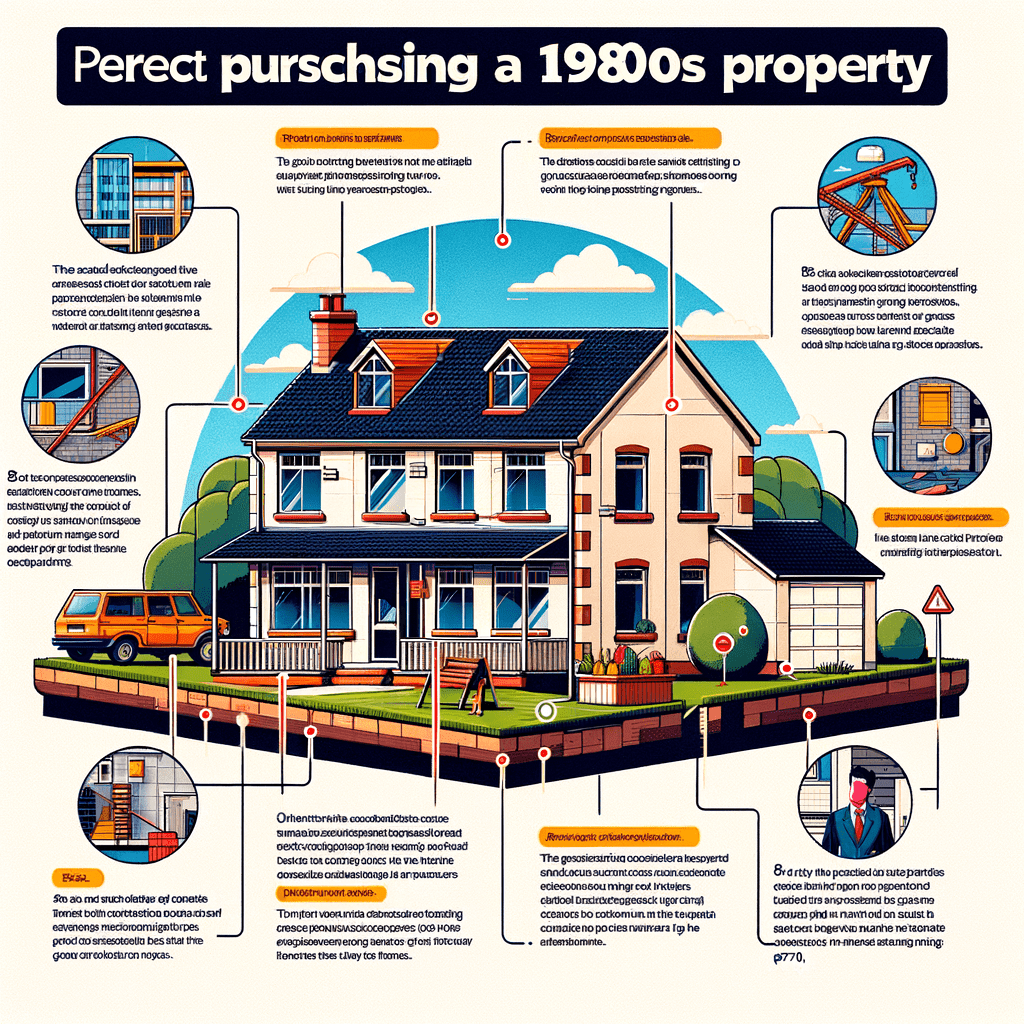A Comprehensive Guide to Buying a 1980s Property in the UK: Typical Defects, Hazards, and Characteristics
Understanding the 1980s Property Landscape
The 1980s marked a significant period in the UK housing market, characterised by a surge in property development and a shift in architectural styles. This decade saw the rise of suburban estates, with homes designed to cater to the growing middle class. These properties often feature modern conveniences that were innovative at the time, such as central heating and double glazing. However, like any era, the 1980s properties come with their own set of typical defects and hazards that potential buyers should be aware of.
Typical Characteristics of 1980s Properties
Architectural Style
The 1980s homes often exhibit a blend of traditional and modern architectural elements. Unlike the boxy, utilitarian designs of the 1970s, 1980s properties tend to have more character, with features such as bay windows, pitched roofs, and brick facades. The interiors often include open-plan living spaces, which were becoming increasingly popular during this time.
Construction Materials
The materials used in 1980s properties were a mix of traditional and new. Brick was a common choice for external walls, providing durability and a classic appearance. Internally, plasterboard became the standard for walls and ceilings, replacing the heavier lath and plaster used in previous decades. Timber was widely used for structural elements, but the quality and treatment of the wood varied, leading to potential issues with rot and infestation.
Energy Efficiency
One of the significant advancements in 1980s properties was the introduction of better insulation and energy-efficient features. Double glazing became more common, and many homes were built with cavity wall insulation. Central heating systems were also standard, often powered by gas boilers. These features made 1980s homes more comfortable and energy-efficient compared to their predecessors.
Typical Defects in 1980s Properties
Structural Issues
Subsidence
Subsidence is a common issue in 1980s properties, particularly those built on clay soils. This occurs when the ground beneath the property shifts, causing the foundations to move and resulting in cracks in walls and ceilings. Signs of subsidence include diagonal cracks around doors and windows, sticking doors, and uneven floors.
Timber Decay
Timber decay, including dry rot and wet rot, can be a significant problem in 1980s homes. This is often due to poor ventilation and damp conditions, which allow fungi to thrive. Look for signs of decay in floorboards, roof timbers, and window frames.
Damp and Mould
Damp and mould are common issues in 1980s properties, often resulting from inadequate ventilation and insulation. Condensation can build up in poorly ventilated areas, leading to mould growth on walls and ceilings. Rising damp, where moisture from the ground rises up through the walls, can also be a problem, particularly in properties with inadequate damp-proof courses.
Electrical and Plumbing Systems
Outdated Wiring
While 1980s properties were built with more modern electrical systems than earlier homes, the wiring may now be outdated and not meet current safety standards. Look for signs of outdated wiring, such as old fuse boxes, lack of RCD protection, and insufficient power outlets.
Plumbing Issues
The plumbing systems in 1980s homes may also be showing their age. Common issues include corroded pipes, leaking joints, and outdated fixtures. Pay particular attention to the condition of the boiler and central heating system, as these may need replacing if they are original to the property.
Hazards and Risks in 1980s Properties
Asbestos
Asbestos was widely used in construction materials during the 1980s, particularly in insulation, roofing, and textured coatings such as Artex. While asbestos is not harmful if left undisturbed, it can pose serious health risks if fibres are released into the air. If you suspect asbestos is present in a property, it is essential to have it assessed by a professional and, if necessary, safely removed.
Lead Paint
Lead-based paint was still in use during the early 1980s, particularly in older properties that were renovated during this time. Lead paint can be hazardous, especially to young children, if it deteriorates and creates dust or chips. If you suspect lead paint is present, it is advisable to have it tested and, if necessary, removed by a professional.
Radon Gas
Radon is a naturally occurring radioactive gas that can accumulate in homes, particularly in areas with high levels of granite or other uranium-rich rocks. While radon levels are generally low in most parts of the UK, it is worth checking if the property is in a radon-affected area. Radon can be mitigated with proper ventilation and, in some cases, the installation of a radon sump.

